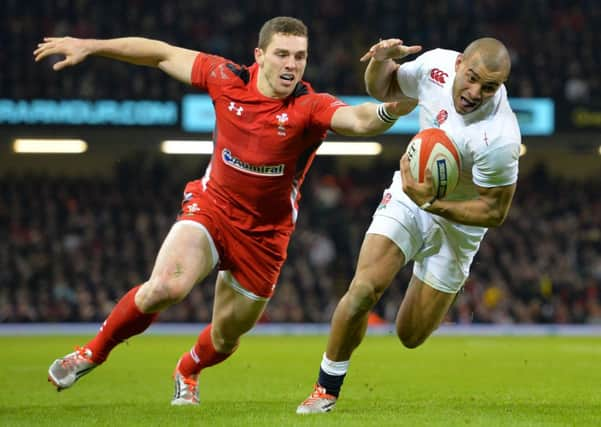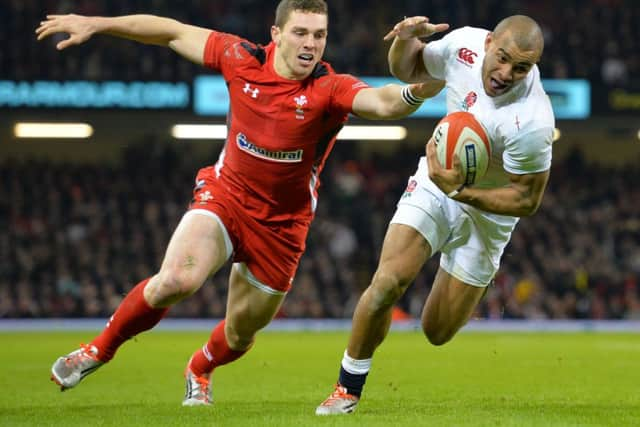Six Nations: George North proves concussion fears


Not six months ago, in a far-flung corner of cyberspace, I told the tale of Dr Ryan Kohler, a shrewd but steely Capetonian employed by the ARU as Australian Rugby’s all-new ‘concussion consultant’.
Ryan’s role took him far and wide across the nation; he delivered fresh education programmes to the masses, the lifeblood of rugby union who remain relatively starved of knowledge, care and guidance, while simultaneously keeping a watchful eye over the green-and-gold clad heroes at the pinnacle of the Australian game.
Advertisement
Hide AdAdvertisement
Hide AdI had followed the tempestuous beast of sports concussion since the first woozy steps of George Smith’s snake-dance from the Sydney turf in the Lions’ Third Test of 2013, as it hurtled, snowballing down a treacherous slope of litigation, pain and wanton tragedy.


When it came to Ryan, I didn’t hold back. But you can always count on a South African for frankness and pragmatism.
I was impressed by his practical, front-line approach to concussion –he zeroed in on what he could improve, the areas where his efforts would be felt most acutely, and let other experts worry about those he could not.
And one line, one bells-and-whistles humdinger of a head injury quote leapt off the page:“We’re now in a position where we will simply not have another George Smith, certainly at Test level,” he said of the Australian game.
Ryan is a fine physician with a wealth of very specific experience.
But as anyone who cast a glance towards Cardiff on Friday, Wales versus England, a knocked-out, wrongly assessed and returned-to-play George North, a bloodied and groggy Dan Biggar, and an unsteady Leigh Halfpenny will tell you, elsewhere in the elite game, Smith’s infamous snake-dance is alive and boogying.
For all the PR talk of improvement and engagement, here were yet more examples of the misuse of rugby’s controversial pitchside Head Injury Assessment protocol in the case of North – there is no need to test a player who has been knocked unconscious – and its questionable non-application in the cases of his teammates, for all the rugby world, and many more besides to see.
I wonder what the affable Dr Jamie Roberts, in between fly-half, winger and full-back in midfield made of it all.
Advertisement
Hide AdAdvertisement
Hide AdWe’ve seen it before, of course, with Brian O’Driscoll. We’ve seen it with Smith. We’ve seen it too with Brodie Retallick in Super Rugby and Florian Fritz in the Top 14 – that sorry episode yielding little but a shameful bout of buck-passing before the French authorities were forced to up their game.
I have spoken to the parents of Rowan Stringer in Canada, and Ben Robinson in the UK, both cut down in their teens by head injuries sustained on a rugby pitch. I’ve seen the tears. I’ve heard the despair. I’ve caught the merest glimpse of the inconceivable anguish that grips them.
Then there are doctors like Kohler, toiling at the grass-roots, and the men and women of brain science and medicine exasperated by the peril of North and company.
There are those too in other sports battling cognitive impairments – middle-aged men at the mercy of short-term memory loss and post-concussive headaches who forget their keys and flood the bath – and the threat of litigation that simmers just below the surface.
Meanwhile, the WRU claim ‘we didn’t see it’ via a pitiful ‘explanatory’ press release and video featuring Medical Manager, Prav Mathema – an absurd excuse, and a poor attempt at saving face.
An international management team might comprise ten individuals, each with access to around six camera angles and radio communications. Even supposing every member of the Welsh staff was simultaneously ‘unsighted’ as North crumpled to ground, the replays were shown on the stadium big-screen, and the BBC’s main feed.
Just where on earth were they all looking? Was Adam Jones perfecting his drop-goal technique in the coaches’ box? I might also ask would their eyes have been so conveniently averted had a player of lesser pedigree taken a mouthful of the Millennium turf.
The deeper, more pressing question though is this: will it take a lawsuit, a death, or an improbable punishment dished out by oft-impotent administrators to safeguard rugby’s prized assets? By the time we uncover the answer, it may be too late.
Advertisement
Hide AdAdvertisement
Hide AdLet’s not forget that medics, coaches and, yes, players too, need consider their duty to the sport they represent, and from whence they derive a handsome living.
To those gracing not triple-tier stadia, nor destined for stardom, but careering around the local playing fields of a Saturday afternoon, swept along on a wave of lager and deep heat.
And to the thousands of youngsters – incidentally, like Rowan and Ben, the age group most susceptible to the effects of traumatic brain injury – who look to them as heroes and role models, and the message even a solitary mismanagement in the face of glaring physical and video evidence delivers.
If sitting it out is good enough for George North, Leigh Halfpenny or Dan Biggar, then it’s good enough for them. Friday’s events might lead some to believe the opposite is also true.
The fanfare given last September to new guidelines outlining the WRU’s ‘zero tolerance’ stance on concussion seem rather laughable now.
How many players, coaches or parents read it, or the document it says was distributed to all Welsh clubs? How many remember the guidance within?
These pamphlets are often found strewn around clubhouses and bar-lounges, dog-eared, beer-stained, hanging limply from muddied pinboards still adorned by flyers for the 2010 Pre-Season Bake Sale.
Contrast those figures with the pull of Wales’ biggest game of the season – the feverish build-up as the Six Nations opener drew near. How many were watching? And how many might be tempted to take a risk after seeing North, Biggar and Halfpenny stricken and failed anew?
Advertisement
Hide AdAdvertisement
Hide AdThe full-back’s muscle-bound torso is plastered across the cover of a well-known men’s glossy magazine this month. The WRU, it seems, care enough about their player’s health to allow them to dish out workout tips, but baulk at protecting them from the effects of a brain injury.
It all comes down to another of Kohler’s remarks, as relevant now as it was then: “at some point, people have got to realise they have a responsibility and a duty of care.” For the good of the game and all who cherish it, let that point be now.
FOLLOW US
SCOTSMAN TABLET AND MOBILE APPS